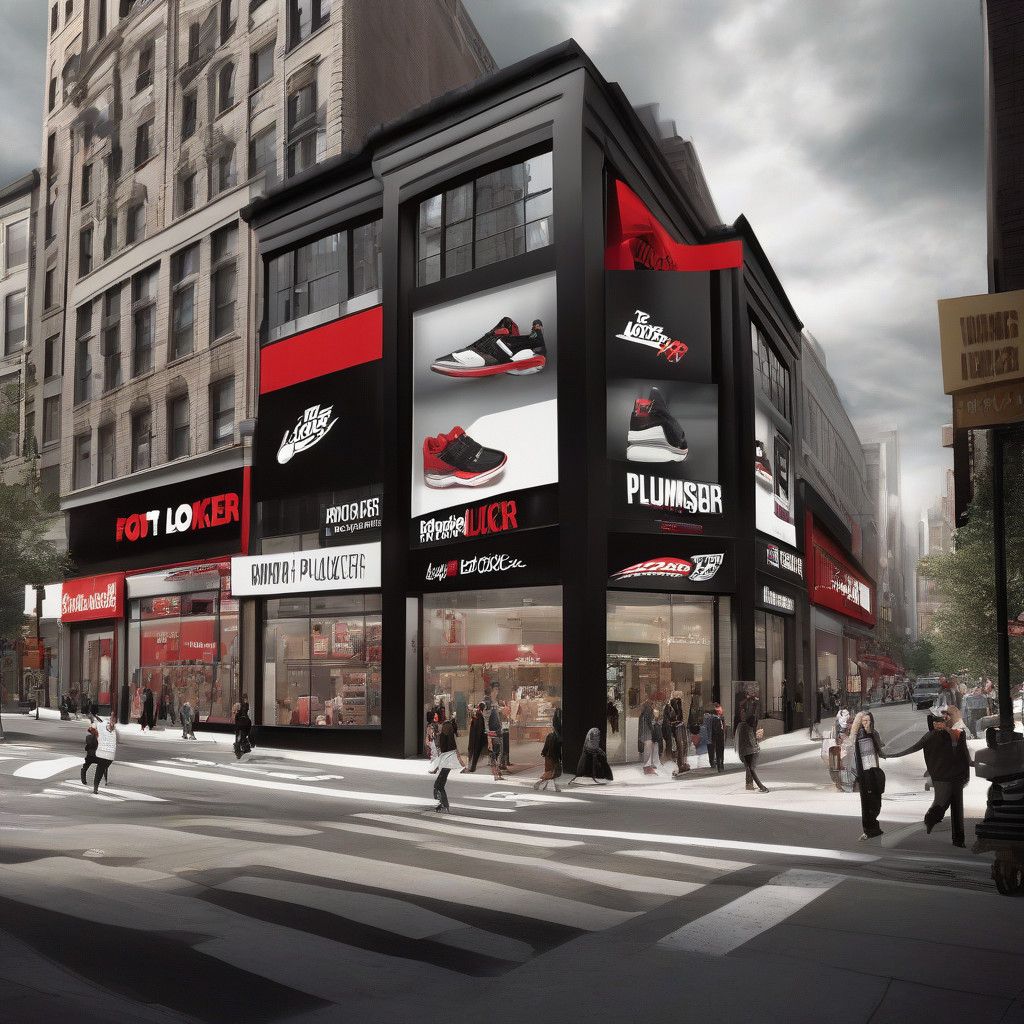In a recent update, Foot Locker Inc. reported a revenue of $1.9 billion for the quarter ending August 3, surpassing analysts’ expectations with a notable 2.6 percent gain. This significant recovery followed a troubling streak of five consecutive quarters marked by negative comparable sales. On the surface, these figures suggest a positive turnaround and increasing customer engagement. However, despite the reports of better-than-expected sales, investors reacted negatively, resulting in a sharp 12 percent drop in the company’s stock price within hours of the announcement.
The primary reason for this decline lies in the company’s decision to maintain its annual sales forecast, a move interpreted by investors as an indication of stagnation. The stock had previously experienced a remarkable rise of 46 percent since its last earnings report in May. This recent dip represents the largest single-day drop for Foot Locker shares since March, demonstrating the market’s sensitivity to growth outlooks amidst broader economic uncertainties.
Foot Locker’s recent performance indicates that the retailer is regaining traction within a highly competitive market. The revitalized partnership with Nike Inc. has played a critical role in this recovery. As Nike shifts its strategy away from tight supply constraints—previously aimed at directing funds toward its stores and online platforms—Foot Locker has benefited from renewed inventory levels, boosting sales. This strategic alliance appears promising, especially considering that a well-maintained relationship with key suppliers is crucial for retailers reliant on popular sneaker brands.
Mary Dillon, Foot Locker’s CEO, has prioritized the brand’s transformation by implementing a series of strategic adjustments. For instance, Dillon has focused on enhancing the rewards program in the United States, which is intended to bolster customer loyalty. Revamping store locations has also been part of the strategy, with more than a dozen stores remodeled or relocated last quarter. Furthermore, 67 locations received updates to refresh the selling areas, catering to brand partners like Nike and Adidas.
These changes are vital for Foot Locker, particularly in light of its recent decision to close several international markets. The phase-out of operations in South Korea, Denmark, Norway, and Sweden reflects a recalibration of resources. Conversely, Foot Locker’s move to establish a new technology hub in Dallas this September, alongside plans to relocate its headquarters from New York to St. Petersburg, Florida, by late 2025, illustrates a commitment to innovation and operational efficiency.
Despite the company’s efforts to adapt, challenges remain. In March, Foot Locker’s executives extended their timeline for reaching $9.5 billion in annual sales by two years, now targeting 2028. This delay sparked a stark decline in share value, an indication that stakeholder patience is wearing thin.
A closer examination of Foot Locker’s competitive landscape reveals that it is not operating in isolation. Brands like H&M, Gap, and Lululemon are similarly navigating fluctuating consumer sentiment, adjusting their strategies amidst constricting financial conditions. H&M’s recent initiatives to strengthen its market positioning highlight the broader industry shifts that all retailers must contend with—finding a delicate balance between cost-efficiency and maintaining brand identity.
For Foot Locker, the immediate pathway to regaining investor confidence lies in demonstrating sustained revenue growth and a clear strategic vision that aligns with market demands. Maintaining an effective partnership with Nike is crucial, as is the need for innovative retail strategies that resonate with increasingly discerning consumers.
In summary, while Foot Locker has made tangible progress in terms of sales growth and strategic partnerships, its stock performance reflects a broader sentiment of skepticism among investors. A clear articulation of its long-term goals and consistent delivery on short-term performance will be essential for reigniting investor confidence and ensuring the brand remains competitive in a challenging retail environment.












